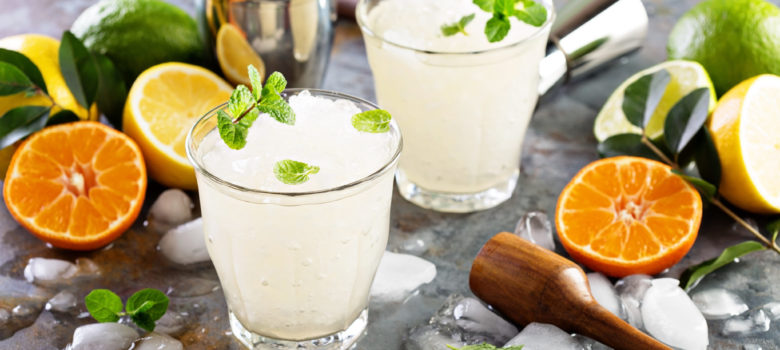
As we’re all getting more conscious of our carbon footprint ad the impact of how we live, a lot of people are changing up their diets. Vegan options are now bigger than ever, while local produce is becoming more popular and sustainable farming is coming into the mainstream. We’ve written quite a bit about lowering the environmental impact of your diet and reducing waste, but it’s a little harder when it comes to drinks. So what does it take to make an eco-friendly cocktail? How can we have a night on the town without the guilt of the carbon footprint?
Getting creative with leftovers
One of the best ways to reduce the footprint of your drinks is to think more carefully about how to incorporate waste elements. Fruit peels and skins can often be used to create juices and infuse spirits without having to go out and buy expensive cordials. Take a look at some of the cocktail recipes below for inspiration.
Using local spirits
With craft spirits having had a real resurgence in recent years, a large number of microbreweries have popped up around the country. Instead of the big names brands which ship in from around the world and come with a hefty carbon footprint, think about opting for a local option with a much smaller impact. Farmers markets are great for this. If it sounds expensive, we get it – small-batch craft spirits tend to come with a big price tag – but even just keeping your alcohol British can help. You can find 50 of the best British spirits here.
Eco-friendly bars
Here are a few of our favourite environmentally-friendly drinking holes in London. If you visit, keep an eye out for us!
Scout, Shoreditch: With a focus on minimal waste to ensure its conscious sustainable operation that shouts from the roof top how incredible the produce from the British isles is. Scouts menu changes daily adapting to seasonal produce from foragers, farmers and growers alike.
Nine Lives, Bermondsey: The name Nine Lives refers to an ethos of salvation – unveiled treasures, nothing wasted, everything lovingly sourced & selected with intention.
Super Lyan, Hoxton: Ryan Chetiyawardana opened his first bar, White Lyan, in London in 2013 as the first cocktail bar in the world to use no perishables; no fruit and even no ice. It was an exploration in sustainability, with much lower waste and use of pre-made cocktails and innovative ingredients.
Eco-friendly cocktail recipes
So, we’ve talked about local spirits and using leftovers, but how does all that translate into delicious environmentally friendly cocktails which taste as good as they feel? Try one of these…
Strawberry Jam Bellini
Finished with that jar of jam and can’t scrape any more from the sides? Fill it with prosecco and stir gently mix with a long spoon. Pour into glasses and serve.
White Russian
A traditional white Russian is made with coffee liqueur and cream, but we challenge you to this alternative. Mix the coffee granules that have been sitting in the back of your cupboard since 2018 with vodka and milk. We won’t judge how big you make this drink, but you’re going for a 1:2:3 ratio here. Add sugar to taste. Wham, bam, thank you. And don’t forget to go for a British vodka like this one if you can.
Offcut Cordial
This one isn’t strictly alcoholic but does make for an excellent mixer or margarita base. The base of cordial is, and you’ll like this, basically any fruity/vegetabley/herby offcuts you can think of. Get creative. Orange peel, lemon zest, squished berries, mint stems, cucumber offcuts, watermelon rind….. Weigh up what you’ve got an cover in a pan or large mixing bowl with an equal amount of hot water. Cover it over and leave it overnight. In the morning, strain out your offcuts and weigh the liquid you have left. Divide that by 100 and add that much malic acid. Divide it by 50 and add that much citric acid. For sugar, you can be less precise – if you want a syrup then the general rule of thumb is to add equal parts sugar, but for a true cordial then you can use significantly less. Our best advice is to start low and keep adding until you’re happy with the taste and consistency.
Unlike the other recipes we’ve mentioned, this one makes a decent amount and is not designed to be drunk all at once, so ensure that you keep it sealed and cold.
This recipe was adapted from one by the outstanding Trash Tiki guys – you can read more here.
Think we missed something? Do you have a different opinion?
Comment below to get your voice heard…












No Comments yet! Be the first one.